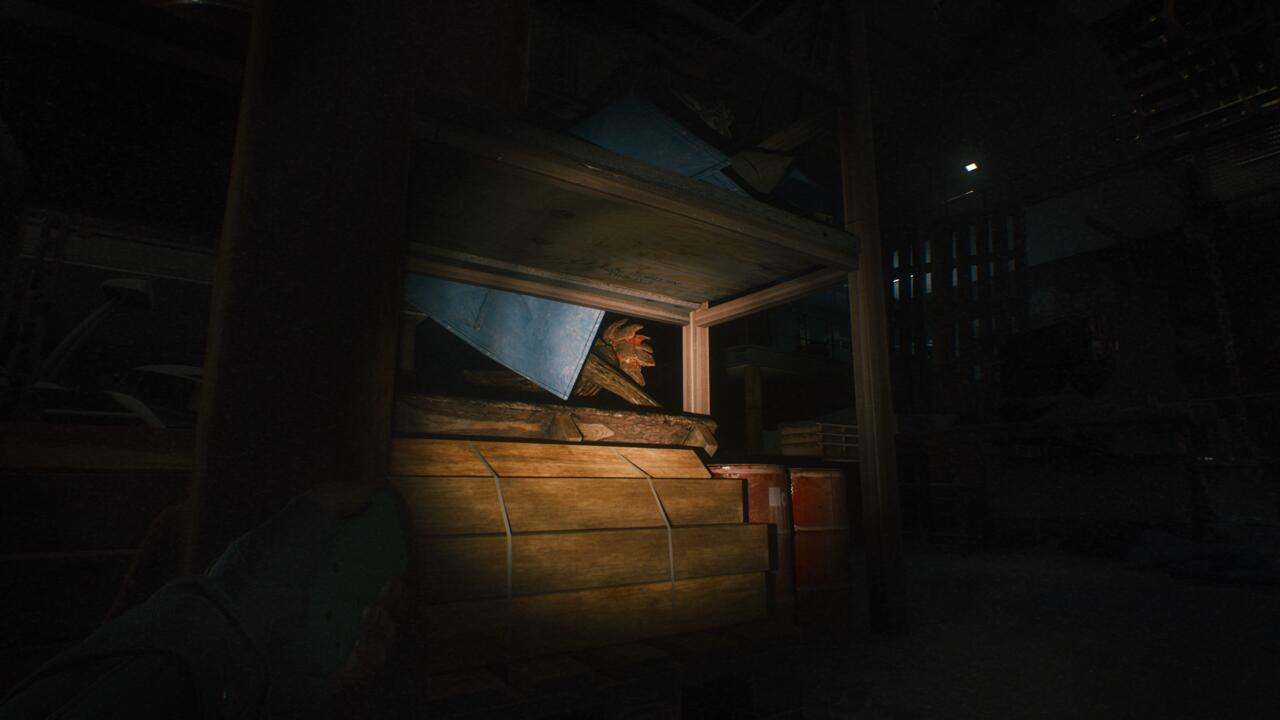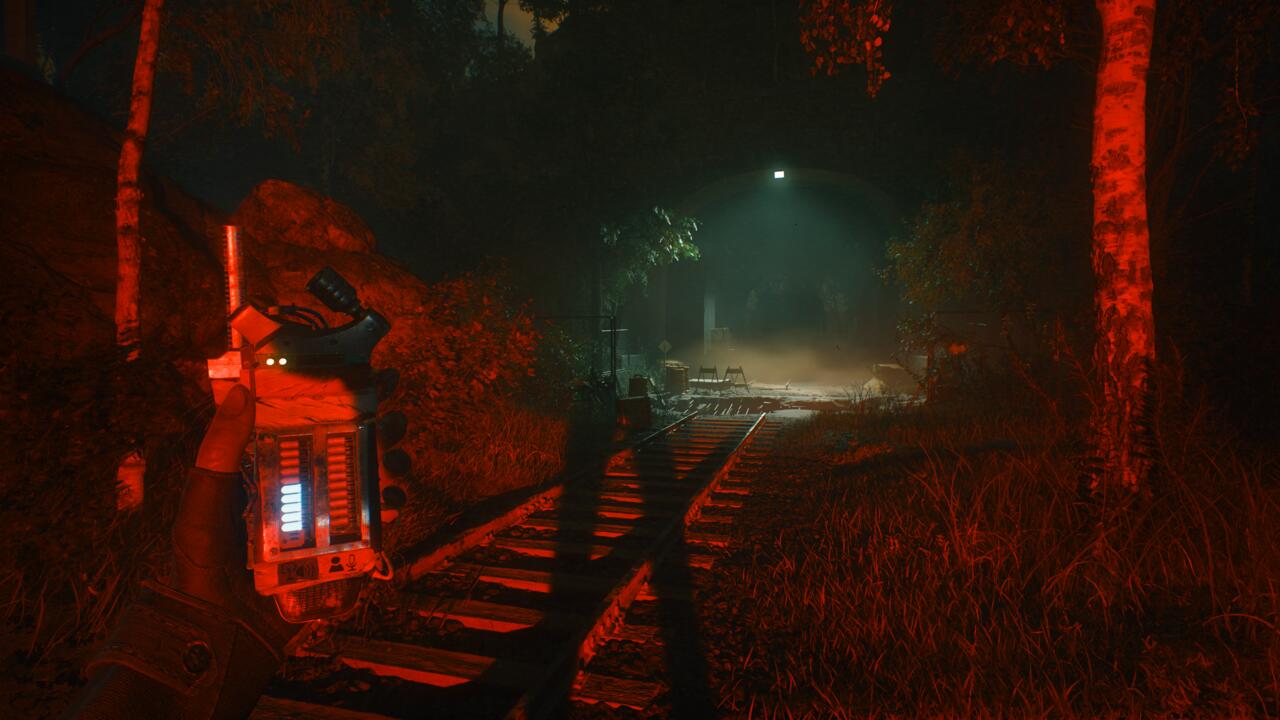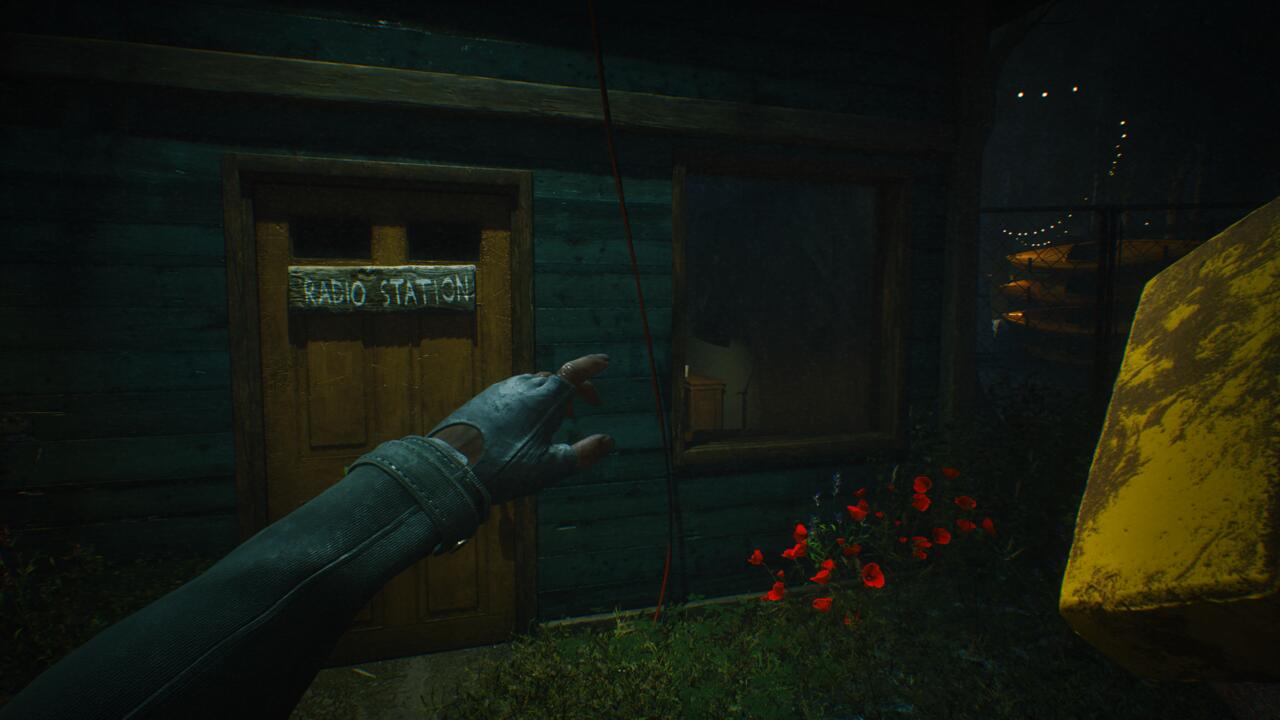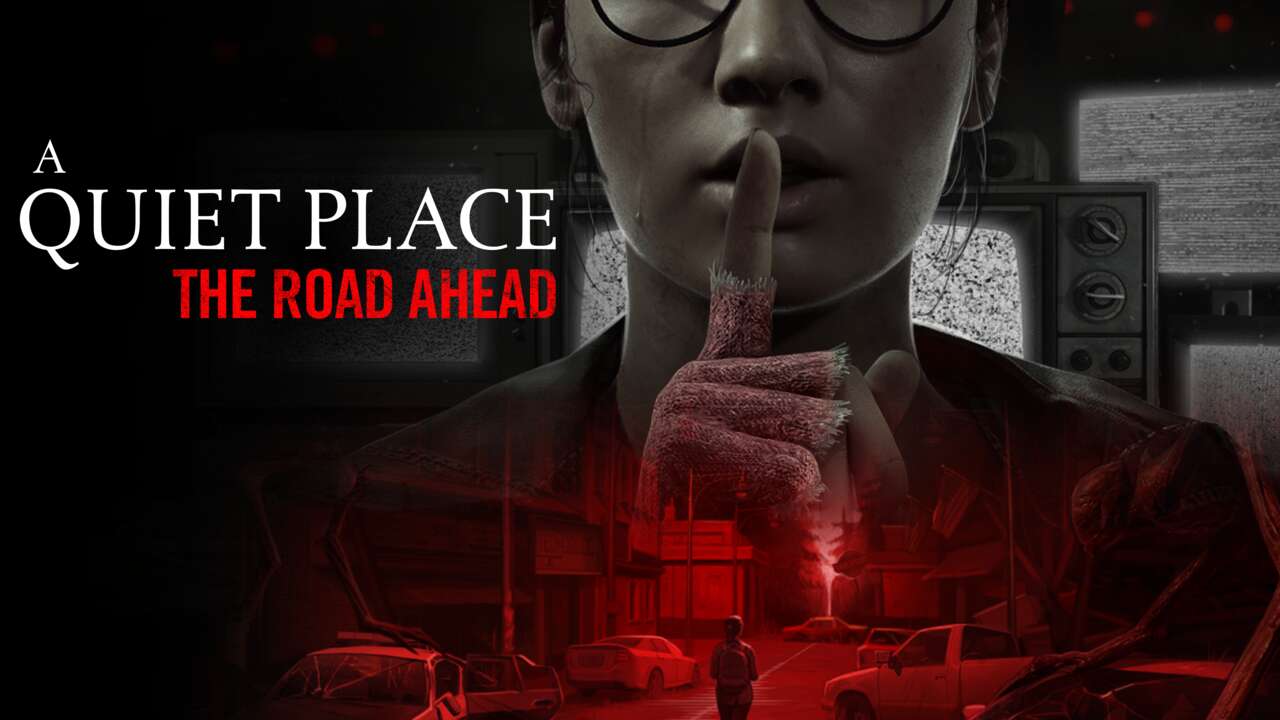A Quiet Place has quickly grown into one of the better horror franchises of the past decade. Three movies deep, the creature features have explored a fascinating world in which blind aliens use a highly keen sense of hearing to hunt humans desperate not to make a single peep. Translating that incredibly slow and silent story universe to a video game makes for a novel project, and I can see why A Quiet Place: The Road Ahead has launched so quietly itself. It’s a strange mission to assign players, but it’s one I’m glad to have experienced–despite a host of issues.
A Quiet Place: The Road Ahead is a first-person stealth-horror game starring a cast of characters new to the series but similarly seeking to find safety from the swarm of aliens who have commandeered Earth by force. As Alex–an asthmatic college-aged woman with a boyfriend, a dad, and a range of other perpetually silent allies–players embark on a road trip that will test her ability to crouch-walk pretty much forever.
That design direction could easily make for a frustrating video game. In games that allow me to upgrade my crouched movement speed, I’ve always unlocked it as soon as I can–I like stealth games a lot and so I tend to want to improve that facet of such a game. So it’s notable to me that The Road Ahead doesn’t just demand you crouch-walk through almost every moment of its 7-to-10-hour story, but forces you to do it very slowly, usually barely pushing on the left stick, because the aliens in the game behave unpredictably like Alien: Isolation’s Xenomorph and tend to hear even a crouched footstep performed at full speed.
This is made more complex due to the various surfaces and obstacles that you’ll have to dodge in any mission. Debris such as tin cans, wood planks, leaves, and puddles litter the pathways between you and whatever typically minor environmental puzzle stands in your way of progress, like collecting and using fuses to unlock doors. Every step in this game matters, and that leaves you to understand quickly that you won’t survive a rushed attempt to do, well, anything.
Early in the story, Alex pieces together a phonometer that quantifies environmental noise against her own noise-making. If the latter measure exceeds the former, the alien is liable to hear her, and depending on which difficulty you’re playing on, she can only survive two or three blips on the alien’s figurative radar before it’s going to pounce directly on her, or at least rush over to where the noise was made.
In the best of the game’s missions, the aliens are roaming freely in the space with you, while in others, they’re unseen but erupt into a quick game-over screen if you’ve made too much noise. I found the alien to be extremely perceptive regardless of the difficulty, having played on all three–there’s also an ultrahard “survivor” mode which seems impossible given the unforgiving adeptness of the game’s central monsters.
Doors and drawers have to be opened often, both to progress through levels, but also to seek out supplies like inhalers to treat Alex’s asthma or batteries to power her flashlight. The process of opening any door or drawer takes, remarkably, 8-10 seconds if you don’t want to alert the monster, which forces you to perform every action like a teen sneaking out of their house at night, only with much higher stakes.
These moments demonstrate, best of all, how The Road Ahead could easily not work for many or most players. I’ve never seen a game demand so much patience, but it’s all in service of capturing the authentic feeling of the movies, in which the monsters are also hyperaware. Alex holds both her phonometer and her flashlight in her left hand, so she can only use one at a time. This creates a thoughtful trade-off that’s constantly being considered: Would you rather see the dark path in front of you or do you need to quantify the noise you’re making? The phonometer can help you know how alert the alien is to your presence, but without a flashlight, you’re liable to bump into something so noisy that you won’t need the photometer to tell you that you’re screwed.

As the story goes on, both Alex and the monsters add tools to their repertoire. Alex can throw bottles and bricks, or lay planks–again, slowly and silently, or else–to create shortcuts through an area. Later in the game, things like flares for Alex and a scan the aliens perform that can identify any noise you make, even if it doesn’t exceed the environmental soundscape, add additional layers to the survival story. She can even create shortcuts using the alien by throwing a brick through a window, which causes the alien to sometimes smash through the attached wall, letting her into a space that was closed off before. The game’s unfathomably slow cat-and-mouse missions are its very best, even as some of them lack many or even enough ways to be this creative.
In general, I found The Road Ahead to introduce cool ideas routinely, but then it wouldn’t always iterate on them enough. For example, you can find bags of sand in the world, which you use to create silent pathways in front of you, just like characters do in the movies. But every section that used sandbags offered too many of them, leaving me not to worry about creating the optimal path. Instead, I’d build a self-contained highway of safe passageways so I could always have an exit route if the alien was closing in, unaware of my presence. At some other points, throwable bricks are stacked in infinite supply. I wish I had to think about how I’d use these tools more than I did.
Checkpointing is occasionally frustrating, too. Usually, the game auto-saves whenever you complete a major section of an area, like assembling one of two or three total items you need to progress. The issue arises when one step in a multi-step process is so involved that starting even that portion over feels disheartening. In two different instances, I also had to reset an area due to bugs that plainly came off like a lack of polish. The first instance let me into an area meant to be closed off until I found a key. I hadn’t found it yet, but assumed I’d just missed the fact that I had since I got through to the other side. I could see where I was meant to go next, but the game wouldn’t let me do so because I’d wiggled into a purgatorial state where I found myself in the right place at the wrong time.

Something similar happened in the game’s last level when I climbed a roof and elected to open a hatch given the on-screen prompt, but in truth, no hatch existed, which trapped me in the geometry and demanded I reset from the last checkpoint. It felt like a remnant from a previous version of the level. Similar to how the game doesn’t always go far enough with its cool ideas, it can sometimes feel a bit unpolished.
Alex’s asthma is gamified in that enough stress can set it off. This means both physical stress, like lifting heavy barrels to open up a pathway, but also more psychological stress, like spending time near the monster. Often, the creature will be just inches away. It’s all as wonderfully tense as it should be, and that may set off a quick-time event in which you, as Alex, can have the asthma attack (and thus alert the alien). You’ll need to stave it off momentarily as you seek out inhalers or other aids, or completely overcome it with a perfect button press. I found these to be easy enough not to fail but I rarely perfected them, which is good; I didn’t feel like the storm was over, so it became an additional concern as I’d tip-toe around the monster.
Along with her respiratory condition, Alex is also suffering in a few other ways I won’t spoil, but I find her to be full of contrived circumstances meant as shortcuts to elicit player empathy. The overall arc of the story is enjoyable, but I was always mindful of how the writers threw so much on her figurative plate rather than drilling down on one facet of who she is to explain why I should care about her. The interactive element of video games is already an empathy bridge as is, so some of her backstory and the things that happen to her in the course of the story just feel like desperate piling on to make sure players are emotionally invested.
The extremely slow pace will be polarizing, but for me it was a job well done, even as it wasn’t always done as well as it could’ve been. I find this novel pace to be a great quality to the game, and it never directly frustrated me. What got under my skin were tangential to this, its best quality, such as oddly barren audio settings and those aforementioned bugs.

I play all my games with headphones, and I was surprised to find this one, with such an intense focus on sound, doesn’t offer even rudimentary sound options like switching to an output suited for headphones. As a result, the game often sounds flat when played with a headset. There is at least an option to let the alien pick up your mic audio, which I found works well thanks to custom calibration options. I toyed with it at different times but ultimately left it off for most of my playthrough given I have two kids and a dog in my house and didn’t want Alex to die at the figurative hands of the Bluey theme song.
It may seem like I have a lot of complaints for The Road Ahead, and if you count them individually, my frustrations do outnumber the parts I enjoyed. However, I also find its novel stealth-horror approach interesting enough to merit seeing it for yourself; its best parts are greater than their sum. A patch could resolve some of the polishing issues–though given how this game was tossed into the world with little marketing, I wonder if the team is even assigned to do more with it.
A Quiet Place: The Road Ahead is a certainly flawed but also intriguing attempt to make a video game out of a premise that seems not to be conducive to this medium. Crouch-walking around a monster for several hours should’ve probably been a worse experience, but it proves to be a sound idea that may have been a cult classic if it only had more attention to detail.
